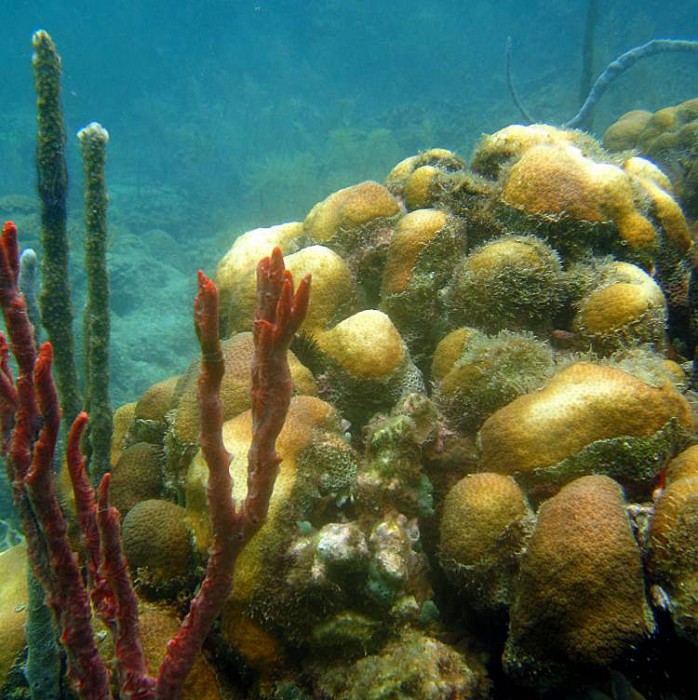Building on the past to save the future of the coral reef
You might think that scientific knowledge comes only with new discoveries, but for Katie Cramer, a MarineGEO postdoctoral fellow at the Smithsonian Tropical Research Institute, delving into the past is informing the future.
A native of Phoenix, Cramer has been working at STRI in Panama since 2005. She is currently researching the history of human activities and Caribbean reefs. Her paper, “History of human occupation and environmental change in western and central Caribbean Panama,” provides a first-of-its-kind look at the impact of human activities along the Panamanian coastline dating back thousands of years. While other studies have examined particular events or periods of time, this is the first comprehensive study of human activity and coral reefs in the region.
Building on the research of fellow Smithsonian scientists as well as other anthropology and archaeology specialists, Cramer compiled a history of Panama’s coast. “I scoured the scientific and historical literature in order to reconstruct a timeline of human impacts on the coastal zone of western and central Caribbean Panama, from pre-historical time to the present,” she says. She also compared the coastal zones of Bocas del Toro and Costa Arriba de Colón. Her research found that population density and coastal zone exploitation has been much greater in Costa Arriba de Colón, which explains why its reefs are in poorer condition today.
Cramer notes that in the last 100 years, Panama has seen the greatest changes in terms of increasing human population growth and exploitation of land and sea. Although people have been fishing along the coasts for millennia, Caribbean reef corals did not appear to be affected by human activities until the 1980s. However, since then coral in the Caribbean has declined by an average of 80 percent.
“Since the 1980s, coral reefs across the Caribbean have been affected by outbreaks of coral disease and coral bleaching that have dramatically reduced the total abundance of corals,” she says. “In many cases, including in Panama, algae have taken the place of corals, threatening the integrity of the coral reef habitat.” Coral reef research did not begin in earnest until the 1980s, so Cramer’s historical research is of great value to those working to save these ecosystems.
Cramer points out that environmental awareness is increasing in Panama and with that understanding comes a greater ability to protect and repair damaged reefs. Cramer hopes to create a foundation that future research can build upon.

A coral reef near Bocas del Toro, Panama recovers from a mass bleaching event that occurred in the summer of 2010. The tops contain some bleaching, but the sides look healthy. (Photo by Amanda Feuerstein)
“History of human occupation and environmental change in western and central Caribbean Panama,” was published online by the Bulletin of Marine Science in April.
Posted: 9 August 2013
-
Categories:
Feature Stories , Science and Nature , Tropical Research Institute




